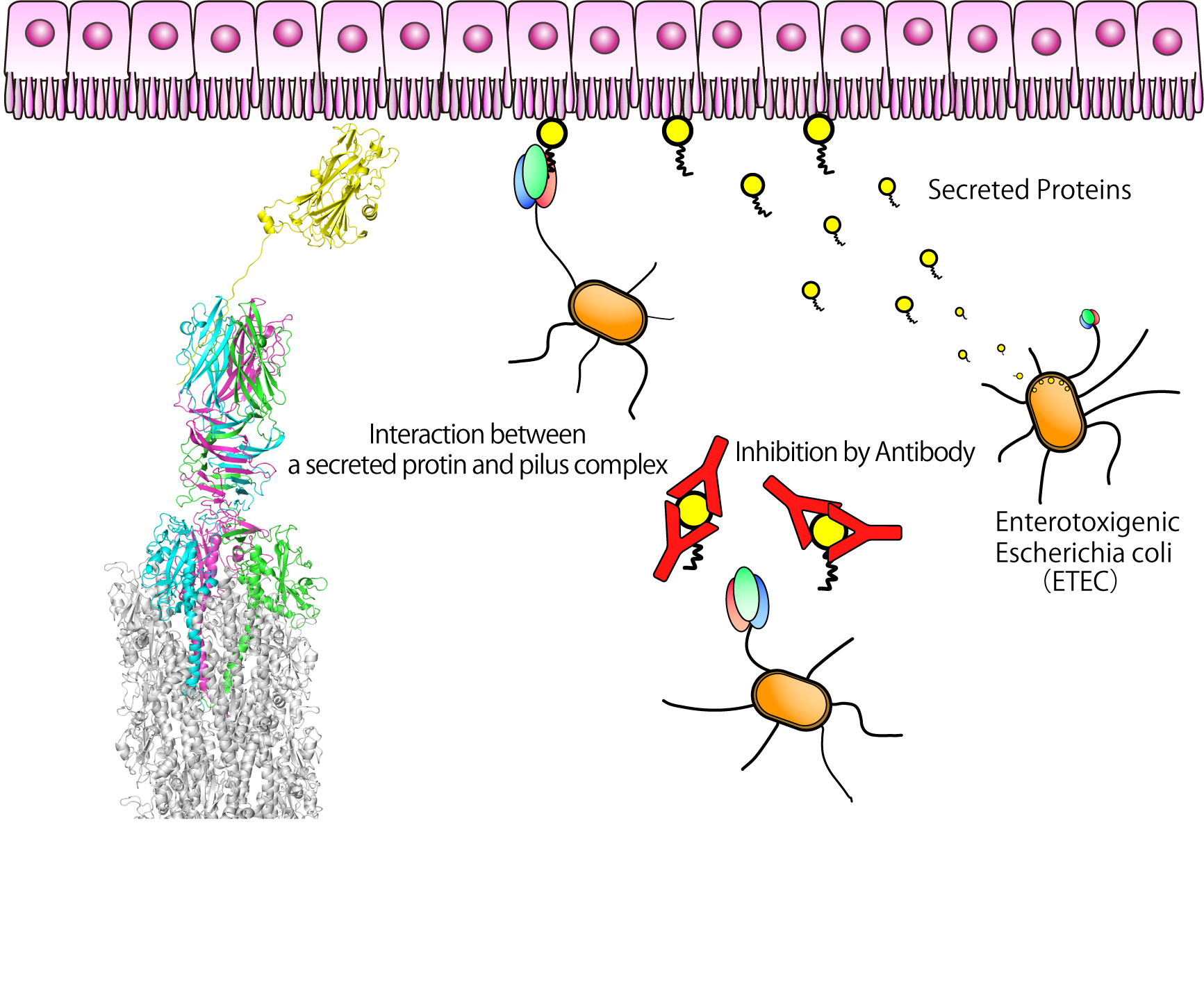Identification of proteins important for enterotoxigenic Escherichia coli colonization. (Nakamura lab. in PNAS)
Enterotoxigenic Escherichia coli (ETEC) is known to be the leading cause of diarrhea in travelers and people living in developing countries. According to the World Health Organization (WHO) statistics, it is a serious problem that leads to between 300,000 and 500,000 deaths annually. To date, no effective vaccines against ETEC have been developed. Therefore, the currently provided treatments largely rely on the use of antibiotics and the symptomatic therapy. However, due to the newly emerging problems of drug-resistant bacteria, there is an urgent need for developing alternative therapeutic options to fight against such bacterial pathogen.
Apparently, the most crucial step in ETEC infection is the bacterial adhesion to the target intestinal surfaces. Although previous studies have suggested that characteristic filamentous appendages, known as type IV pili, emanated from the bacterial surface, play a decisive role in this process, the precise mechanism by which this adhesion occurs remain to be elucidated. To address this issue, we have structurally and functionally characterized the type IV pili-mediated adhesion of ETEC, which aimed at developing novel anti-adhesive agents that do not rely on antibiotics and specifically prohibit the initial attachment of such bacterial pathogens to human intestines.
In the present study, we found that the type IV pili alone are unexpectedly not sufficient for ETEC adhesion, and that secretory proteins released by ETEC onto the intestinal tract are also required. In addition, using x-ray crystallography, we have shown at the atomic level how secreted protein specifically interacts with the designated pilus protein located at the pilus tip. Together with the cell-based assay, this leads to the notion that the secreted protein serves in an anchor role bridging both the host intestinal surface and the tip of type IV pilus in the process of ETEC adhesion. Remarkably, by administering antibodies against these secretory proteins, we observed that the type IV pili expressing E. coli become unable to adhere to the intestinal cells.
This study provides a deeper insight into the mechanism by which ETEC adheres to the human intestinal tract. Moreover, we found that this adhesion model is common to other pathogenic bacteria, such as cholera. Therefore, it is possible that these results will lead not only to the development of new vaccines against ETEC, but also the development of anti-adhesion agents that prevent the proteins which participate in the adhesion process of other pathogenic bacteria. Because these anti-adhesion agents can flush pathogenic bacteria out of the body without killing them, there is no danger of resistant strains emerging. Therefore, the inhibition of adhesion could become a new attractive treatment against the drug-resistant bacterial infections.
This article was published in PNAS on June 25, 2018.
Interplay of a secreted protein with type IVb pilus for efficient enterotoxigenic Escherichia coli colonization
Hiroya Oki*, Kazuki Kawahara*, Takahiro Maruno, Tomoya Imai, Yuki Muroga, Shunsuke Fukakusa, Takaki Iwashita, Yuji Kobayashi, Shigeaki Matsuda, Toshio Kodama, Tetsuya Iida, Takuya Yoshida, Tadayasu Ohkubo, and Shota Nakamura( *These authors equally contributed to this work. )
Links
- Home
- Achievement
- Research Activities
- Identification of proteins important for enterotoxigenic Escherichia coli colonization. (Nakamura lab. in PNAS)








